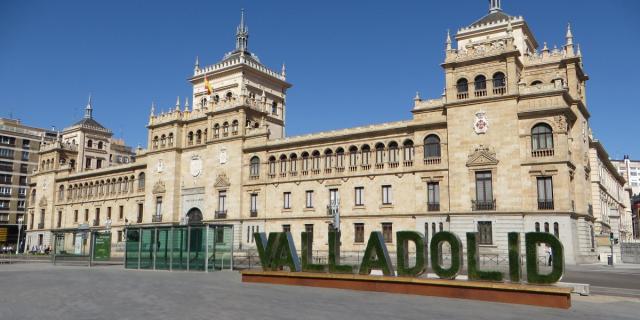
Our World Mobility Tour: Zurich, the city with a high quality of life
Paris, 20th of January 2022
The next stop in our World Mobility Tour is to the city of Zurich, a city often acknowledged as having a very high quality of life for its inhabitants. Our discussion with Anna Schindler, the Director of the Office for Urban Development of the City of Zurich, enables us to discover all the aspects and the strategy of this city regarding the mobility topic.
Zurich has a unique position in Switzerland. It is the country's largest city and is home to an internationally reputed financial centre as well as being the focus of an economic region. Zurich is the capital of the canton of the same name and the centre of a number of regions, which together, have some 1.9 million inhabitants. The high standards of living, working and accommodation are regularly confirmed in surveys of the local residents, and Zurich consistently finds itself at the top of international rankings of cities in terms of quality of life.
Arval Mobility Observatory: What was the evolution of your city during the last 10 years?
Anna Schindler: We have seen a growth of the population resulting in more densification, more traffic and more congestion. More people are commuting , more people are coming every day into the city. Around 480 000 persons are working every day in Zurich and you also have to add the number of students studying within the city. So we reach the number of 600 000 commuting everyday to Zurich, into a city with a population of 440 000 persons.
What targets do you want to reach on environmental impact and congestion?
We have the aim of focusing on public transport and that the growth in population and the increased demand for mobility should be managed within the public transport network in the first place. To meet the challenges arising from traffic with concrete measures and clear priorities, in June 2012 the City Council launched the urban traffic program called «Stadtverkehr 2025». Here are some of the goals mentioned in this program:
- The percentage of public transport, pedestrian and bicycle traffic within the overall volume of traffic in the City of Zurich is to be increased by at least 10 percentage points within 10 years;
- The availability and attractiveness of public transport along with pedestrian and bicycle traffic are to be improved;
- The overall capacity of the vehicular traffic network for motorised private transport will not be increased.
Zurich would like to reach the net zero target by 2040. We are developing some initiatives such as 30km/h speed limit in a number of roads within the city, e mobility, e buses, e transportation.
What is the mobility mix used to commute every day?
Public transport is the most popular mode of transport representing 47% of journeys inside Zurich, cycling 9%, private cars 9%.
50% of households do not have a car in Zurich and amongst those that do only 13% use their car on a regular basis.
In term of mobility what are the different solutions available in Zurich?
Zurich has a modern public transport network: trams, buses, ferries, suburb trains and funiculars combine to make up a comprehensive and efficient range of transport options. Our public transportation network is really good and really strong.
We also want to continue to make efforts on bicycle usage. We have to achieve a good use of private and business traffic and to combine them in order to enable easy access to the city centre, achieve our net zero target and that traffic becomes more sustainable.
In November 2020 the Zurich Transport Authority (VBZ) partnered with the mobility firm ViaVan in order to launch “Pikmi”. “Pikmi” is Zurich's first “on demand service” for public transportation. The minibuses are available every evening for standard public transportation fees. The 18-month pilot sees ViaVan provide an on-demand shared services from 8pm to midnight, Monday-Sunday, to fill current gaps in public transport provision. Passengers can book rides through the “Pikmi app” and pay by presenting a valid public transport ticket to the driver. Passengers can use the service in conjunction with other forms of public transport. This new service is proving to be very successful and works well.
Concerning bicycles, we have currently 807 km of bike lanes in the city.
You can find a lot of sharing mobility solutions such as bike sharing, car-sharing solutions in Zurich. Regarding car-sharing solutions, one of providers is Mobility, one of the oldest car-sharing companies within Europe, who were established in 1997 and who operate more than 1,540 stations throughout Switzerland.
How do you support the development of these solutions in term of infrastructure?
We have a strategy to implement more charging stations and to make them more accessible. We have plans to develop more in the future; how and where still needs to be defined. There is no rule implemented by the city or the canton about the number of charging stations in the private space.
Concerning bicycles, we have the political goal of implementing a 50km high-speed road for e bikes.
Through the new strategy «Stadträume und Mobilität», we would like to make public spaces more attractive for pedestrian traffic and implement improvements for bicycle traffic. At the moment, we have a lot of mixed traffic system with public transport and bikes sharing some lanes, which provides challenges in term of safety. The target is to develop a continuous, safe network of bicycle paths within the city.
The City Council has defined a Smart City Zurich Strategy to position Zurich as a Smart City. What is your policy in term of open data? How can data help the city to achieve its targets in term of sustainability?
The aim is to be open by default, but we don’t have centralized data, each department manages its own data with its own policy. In our Strategy Smart City Zurich, we promote a reliable and open data infrastructure. Data and information of the city administration that is not subject to specific confidentiality constraints is made available to the public. In dealing with personal data, data protection and informational self-determination have the highest priority.
We have a very good example regarding the mobility area. In our Smart city Strategy, we have developed an innovation program called “Innovation Fellowships”. This program allows experts from companies or universities to contribute their expertise on ICT and innovation. The «Fellows» work in the city administration for six to twelve months. At the moment, the department of traffic is working with one of these fellows: they are collaborating on data coming from different mobility solution providers and are combining this data with their own data. They are carrying out analysis in order to understand how people use these micromobility services such as e-scooters, e-bikes and bike sharing solutions. This will enable them to understand how to regulate these mobility solutions in the city; which will also enable us to manage an intelligent light system resulting in less congestion. We are working on that.
What are your plans in terms of Mobility as a Service?
A pilot was launched two years ago with «YUMUV»; it consolidates existing urban mobility options such as public transport or shared mobility solutions. With «YUMUV», riders can plan trips, purchase public transport tickets, book and pay for e-bikes and e-scooters. This app is a real time door-to-door journey planner featuring multimodal recommendations for single-mode and intermodal trips. It was born out of close cooperation between Trafi, Swiss Federal Railways SBB CFF FFS, and Public Transport Operators of Verkehrsbetriebe Zürich, Basler Verkehrs-Betriebe BVB, and BERNMOBIL.
Following the COVID 19 pandemic, do you see any change regarding the behaviours of the people of Zurich regard to mobility?
We have seen an increase in bicycles and private cars usage at the expense of public transport.
Indeed, that is a general trend in all European countries and how do you see the mobility evolution in the 10 coming years?
We will certainly increase the 30 km/h speed on inner-city roads. We will work on having safer bike usage in the city and having a safe bike and pedestrian network.
In conclusion, what are the benefits of your success as a smart city? What are the key components for a city to reach this status?
The most important component is connecting and it is also what our Smart strategy is all about. «Smart» means connecting people, connecting organisations or infrastructures in such a way as to create social, ecological or economic added value.
We are working on a big digitalization program for public services and in the city administration, but it is only a means to achieve this cause. We really want to use all the technical evolutions regarding mobility, delivery, and housing with the aim of getting better results.
In brief
Zurich main figures:
- Population: 440 000 inhabitants, plus 600,000 daily commuters.
- Bike lanes in km: 807 km
- Tram: fourteen tram lines throughout the city that serve over 171.9 kilometers of track
- Bus: 14 bus routes in the city
- Trolleybus: the system consists of six lines and a total route length of 54.0 km



